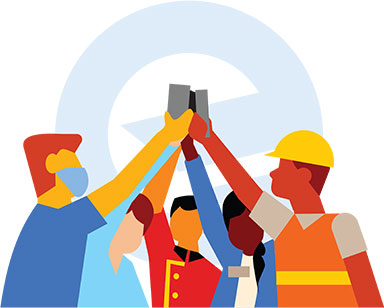‘I don’t get social media.’
‘So, I got a Twitter account but I didn’t know what to say.’
‘We tried Facebook and Twitter and shared a few pictures on Instagram but it didn’t seem to work.’
‘Social media may be better for other industries. Ours is not very progressive with technology.’
Have you ever said any of the above? If you’re a digital/social pro, have your clients or friends ever said something similar to you? It happens to me all the time. All four of the above responses actually came up last week in various meetings.
I’ve learned that trying to explain Twitter and other social platforms in technical terms isn’t helpful for those who are still on the steep learning curve of tech. For example, for a person that still loves to hold and read a printed newspaper, explaining RSS as ‘the curation of various blogs into one application that can seamlessly be synced cross platform and device’ or Twitter as ‘a 140 character based micro-blogging social media platform’ is like someone explaining the inner-workings of a car engine TO ME.
I’m a tech and social guy, not a mechanic. I put gas in the car, have the oil changed, and drive. Thus, we should not expect new converts to digital communication technologies to grasp first the ‘what’ but rather the ‘HOW and WHY’
So, instead of first explaining the WHAT (functions, features, definitions for RT, @reply, +1, Like, @handlename, . . . ), I suggest you first go with the HOW of social and short form communication and to understand the WHY.
HOW can you use social media for both customer and employee communication?
External customer social communication:
Every wonder why people take pictures of their food and post to Facebook, Twitter, and Instagram? Well, eating is a social experience. Food and beverage are social connecting points. Those connecting points existed long before technology and mobile / social platforms. The HOW of social is to talk WITH people. The more you talk WITH, the stronger human relationships become.
 To explain ‘Twitter’ well to those new to the tech and short form communication age, think campfire conversations. [see image for long string of @ replies]. This is what it looks like to talk WITH people on social platforms. Moreover, I don’t think it’s by accident that Google Plus is a social platform focusing on ‘Circles’ and ‘Communities’. Campfires and dinner tables tend toward circles and have always been unique community communication experiences.
To explain ‘Twitter’ well to those new to the tech and short form communication age, think campfire conversations. [see image for long string of @ replies]. This is what it looks like to talk WITH people on social platforms. Moreover, I don’t think it’s by accident that Google Plus is a social platform focusing on ‘Circles’ and ‘Communities’. Campfires and dinner tables tend toward circles and have always been unique community communication experiences.
Internal communication with employees and partners:
To grasp the HOW of internal short form and social communication, think like a sports team. What happens DURING the game and when there is a time-out or break?
During the game, the team huddles to communicate, strategize, and quickly resolve issues and problems that just happened. There isn’t time to wait until the end of the game to communicate or find out that strategy isn’t working. Quick changes requires fast, short, and concise communication. What happens during a time out in a game? The coach(es) provides instruction, encouragement and sometimes the needed motivation to push through to victory. The key though is that the coach and players are in the game together (that’s the social part). Both are striving, focusing, and constantly communicating back and forth.
WHY is short form communication important?
The hard truth is that utilizing short form communication isn’t easy and takes effort; yet, it’s the only path to a team victory.
Patrick Goodman
Red e App Product and Engagement Director


